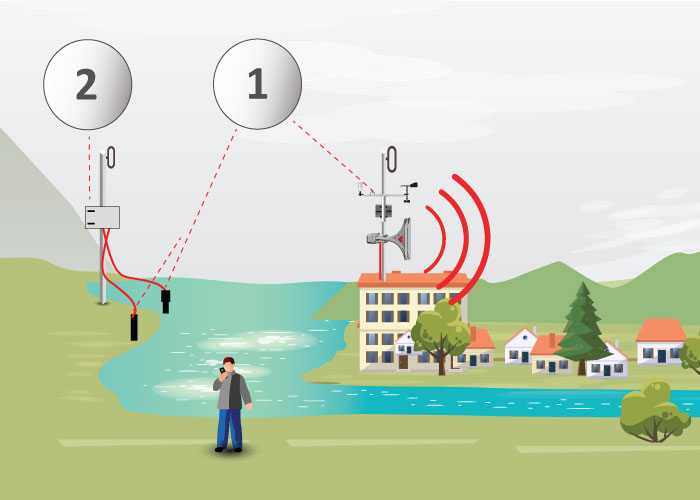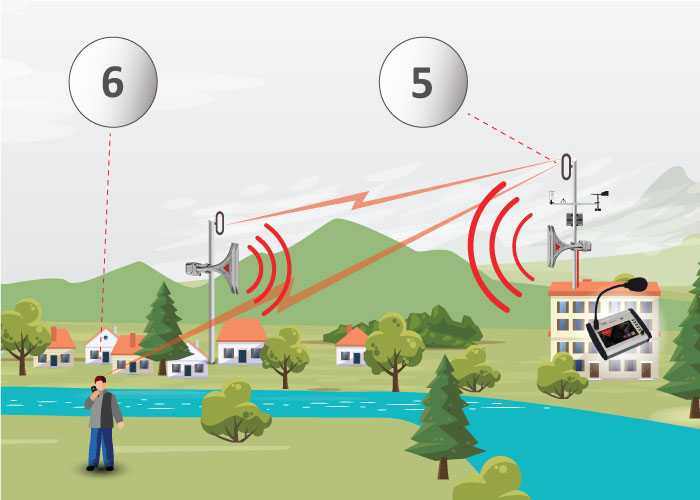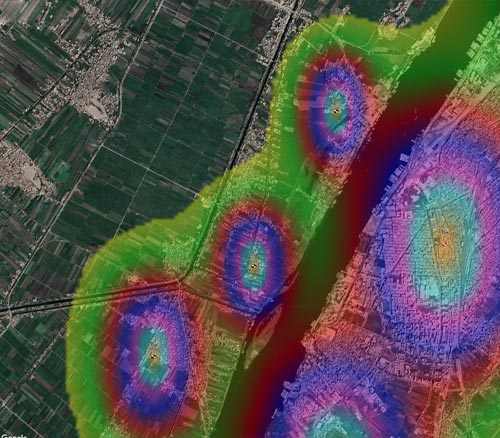Floods, caused mainly by torrential rains, melting snows, or steady rains accompanied by abundant rainfall, pose a severe danger to both humans and their property. Regarding the weather vagaries and the sudden and rapid onset and dramatic progress of extreme weather events, the only efficient and sufficiently flexible method of early warning is a warning system based on electronic sirens.
Early flood
warning systems
Early flood
warning systems
Why build an early
flood warning system
Floods, caused mainly by torrential rains, melting snows, or steady rains accompanied by abundant rainfall, pose a severe danger to both humans and their property. Regarding the weather vagaries and the sudden and rapid onset and dramatic progress of extreme weather events, the only efficient and sufficiently flexible method of early warning is a warning system based on electronic sirens.
Description of a flood
warning system solution
The state-of-the-art early flood warning systems offered by Telegrafia are designed as small to medium-sized systems. They integrate a warning and notification system with one or more monitoring systems. They can be controlled via the OCP16 Operator‘s control panel or Vektra® software applications (SCADA, Warning and Notification) for the individual systems:
Monitoring system – monitors the actual hydro-meteorological situation (total precipitation, water levels in rivers)
Warning system with sirens – provides early warning for the population in endangered areas based on the information delivered by a monitoring system.
Notification system – informs the responsible persons through a voice or text message about an emergency and at the same time summons the personnel to emergency management meetings.
Description of a flood
warning system solution
The state-of-the-art early flood warning systems offered by Telegrafia are designed as small to medium-sized systems. They integrate a warning and notification system with one or more monitoring systems. They can be controlled via the OCP16 Operator‘s control panel or Vektra® software applications (SCADA, Warning and Notification) for the individual systems:
Monitoring system – monitors the actual hydro-meteorological situation (total precipitation, water levels in rivers)
Warning system with sirens – provides early warning for the population in endangered areas based on the information delivered by a monitoring system.
Notification system – informs the responsible persons through a voice or text message about an emergency and at the same time summons the personnel to emergency management meetings.



Advantages of the solution
- Possibility to use data from weather and hydro-meteorological stations
- Automatic evaluation of the values measured
- Notification of the responsible persons at the first signs of a possible emergency
- Immediate warning and notification activation after the recording of threshold levels
- Direct connection of sensors to sirens with no need for additional hardware
- Large-area coverage with a penetrating warning tone
- Total independence of the system in case of a power failure
- Control of other SCADA devices, e.g. switching off public utility supplies, switching on visual signalisation or gate control
- Intelligent operation thanks to silent siren tests, remote device auto-diagnostics, and connectivity with third-party systems

Advantages of the solution
- Possibility to use data from weather and hydro-meteorological stations
- Automatic evaluation of the values measured
- Notification of the responsible persons at the first signs of a possible emergency
- Immediate warning and notification activation after the recording of threshold levels
- Direct connection of sensors to sirens with no need for additional hardware
- Large-area coverage with a penetrating warning tone
- Total independence of the system in case of a power failure
- Control of other SCADA devices, e.g. switching off public utility supplies, switching on visual signalisation or gate control
- Intelligent operation thanks to silent siren tests, remote device auto-diagnostics, and connectivity with third-party systems





